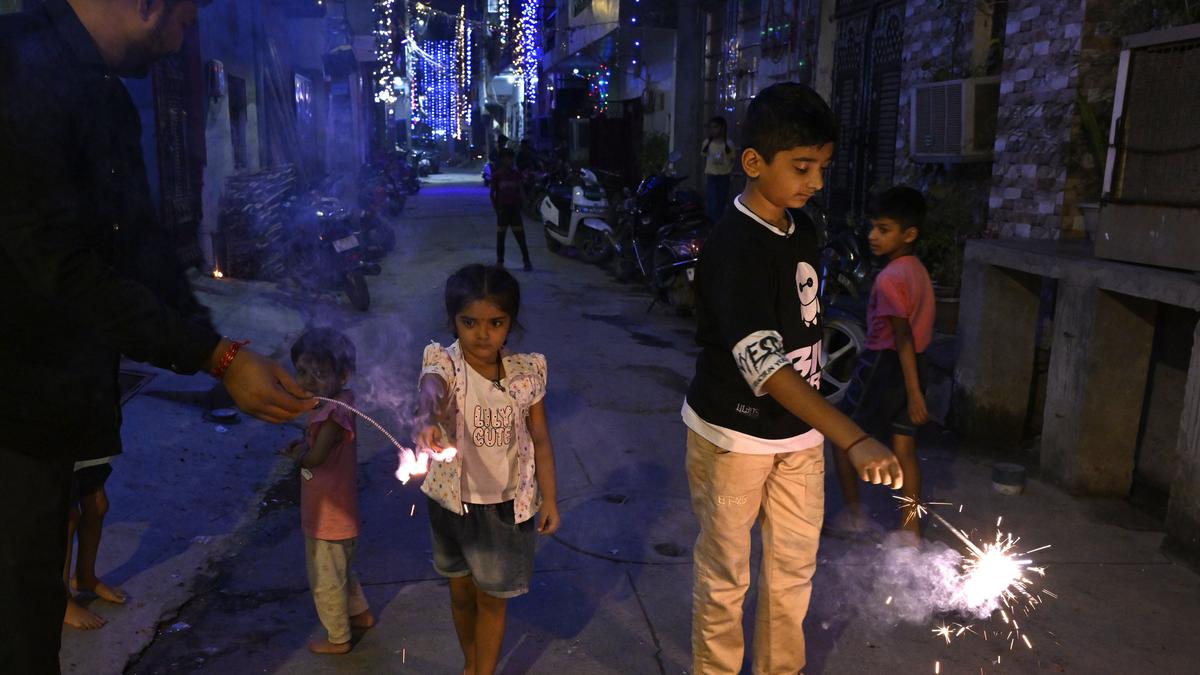
Children bursting firecrackers ahead of Deepavali in New Delhi on Saturday.
| Photo Credit: SHIV KUMAR PUSHPAKAR
Delhi’s tryst with toxic air quality continued for the fifth consecutive day on Saturday as people across the city burst firecrackers in violation of the Supreme Court ban.
While the city’s overall air quality was ‘poor’ on Saturday, it is likely to turn ‘very poor’ on Deepavali and slip into the ‘severe’ category after the festival. The air quality index (AQI) stood at 268, up from 254 a day earlier, even as several areas, including Anand Vihar, recorded ‘severe’ pollution levels. Wazirpur, Bawana, and Siri Fort reported ‘very poor’ air quality, according to the Central Pollution Control Board (CPCB).
On October 15, the Supreme Court relaxed the blanket ban on fireworks in Delhi and the National Capital Region (NCR), permitting the sale of green firecrackers approved by the National Environmental Engineering Research Institute (NEERI) and the Petroleum and Explosives Safety Organisation (PESO) from October 18 to 20.
However, the court restricted their use to October 19 and 20, between 6 a.m. and 7 a.m., and 8 p.m. and 10 p.m. for Deepavali. Despite this, fireworks lit up the night sky across several parts of Delhi on Saturday, including Bhogal, Jangpura Extension, Malviya Nagar, and CR Park.
As per the Central government’s Air Quality Early Warning System for Delhi, the air quality may deteriorate in the next few days. “The AQI is likely to be in the upper end of the ‘poor’ category on October 19, ‘very poor’ on October 20, and may reach ‘severe’ on October 21 if emissions from firecrackers increase. For the subsequent six days, air quality is expected to remain between ‘severe’ and ‘poor’,” it said. An AQI between 201-300 is considered ‘poor’, 301-400 ‘very poor’, and 401-500 ‘severe’.
Published – October 19, 2025 01:52 am IST

